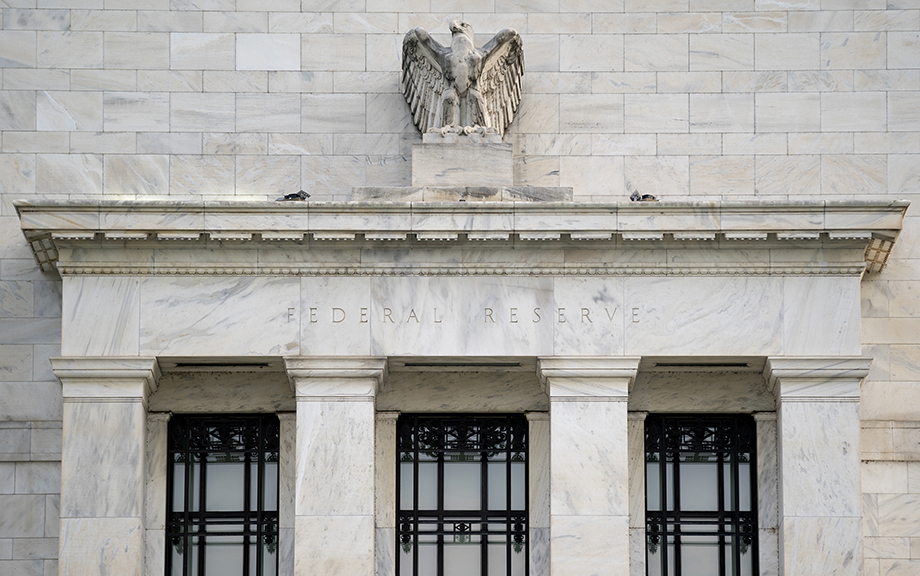Monetary Policy Transmission and the Size of the Money Market Fund Industry: An Update

The size of the money market fund (MMF) industry co-moves with the monetary policy cycle. In a post published in 2019, we showed that this co-movement is likely due to the stronger response of MMF yields to monetary policy tightening relative to bank deposit rates, combined with MMF shares and bank deposits being close substitutes from an investor’s perspective. In this post, we update the analysis and zoom in to the current monetary policy tightening by the Federal Reserve.
The Fed’s Balance Sheet Runoff: The Role of Levered NBFIs and Households

In a Liberty Street Economics post that appeared yesterday, we described the mechanics of the Federal Reserve’s balance sheet “runoff” when newly issued Treasury securities are purchased by banks and money market funds (MMFs). The same mechanics would largely hold true when mortgage-backed securities (MBS) are purchased by banks. In this post, we show what happens when newly issued Treasury securities are purchased by levered nonbank financial institutions (NBFIs)—such as hedge funds or nonbank dealers—and by households.
The Fed’s Balance Sheet Runoff and the ON RRP Facility

A 2017 Liberty Street Economics post described the balance sheet effects of the Federal Open Market Committee’s decision to cease reinvestments of maturing securities—that is, the mechanics of the Federal Reserve’s balance sheet “runoff.” At the time, the overnight reverse repo (ON RRP) facility was fairly small (less than $200 billion for most of July 2017) and was not mentioned in the post for the sake of simplicity. Today, by contrast, take-up at the ON RRP facility is much larger (over $1.5 trillion for most of 2022). In this post, we update the earlier analysis and describe how the presence of the ON RRP facility affects the mechanics of the balance sheet runoff.
Pricing Liquidity without Preemptive Runs

Prime money market funds (MMFs) are vulnerable to runs. This was dramatically illustrated in September 2008 and March 2020, when massive outflows from prime MMFs worsened stress in the short-term funding markets and eased only after taxpayer-supported interventions by the Treasury and the Federal Reserve. In this post, we describe how mechanisms like swing pricing that charge a price for liquidity can reduce the vulnerability of prime MMFs without triggering preemptive runs.
Sophisticated and Unsophisticated Runs

In March 2020, U.S. prime money market funds (MMFs) suffered heavy outflows following the liquidity shock triggered by the COVID-19 crisis. In a previous post, we characterized the run on the prime MMF industry as a whole and the role of the liquidity facility established by the Federal Reserve (the Money Market Mutual Fund Liquidity Facility) in stemming the run. In this post, based on a recent Staff Report, we contrast the behaviors of retail and institutional investors during the run and explain the different reasons behind the run.
How Bank Reserves Are Distributed Matters. How You Measure Their Distribution Matters Too.
Changes in the distribution of banks’ reserve balances are important since they may impact conditions in the federal funds market and alter trading dynamics in money markets more generally. In this post, we propose using the Lorenz curve and Gini coefficient as a new approach to measuring reserve concentration. Since 2013, concentration, as captured by the Lorenz curve and the Gini coefficient, has co-moved with aggregate reserves, decreasing as aggregate reserves declined (such as in 2015-18) and increasing as aggregate reserves increased (such as at the onset of the COVID-19 pandemic).
A New Reserves Regime? COVID‑19 and the Federal Reserve Balance Sheet
Aggregate reserves declined from nearly $3 trillion in August 2014 to $1.4 trillion in mid-September 2019, as the Federal Reserve normalized its balance sheet. This decline came to a halt in September 2019 when the Federal Reserve responded to turmoil in short-term money markets, with reserves fluctuating around $1.6 trillion in the early months of 2020. Then, in response to the COVID-19 pandemic, the Federal Reserve dramatically expanded its balance sheet, both directly, through outright purchases and repurchase agreements, and indirectly, as a consequence of the facilities to support market functioning and the flow of credit to the real economy. In this post, we characterize the increase in reserves between March and June 2020, describing changes to the distribution and concentration of reserves.
Municipal Debt Markets and the COVID‑19 Pandemic
In March, with the outbreak of the COVID-19 pandemic in the United States, the market for municipal securities was severely stressed: mutual fund redemptions sparked unprecedented selling of municipal securities, yields increased sharply, and issuance dried up. In this post, we describe the evolution of municipal bond market conditions since the onset of the COVID-19 crisis. We show that conditions in municipal markets have improved significantly, in part a result of the announcement and implementation of several Federal Reserve facilities. Yields have decreased substantially, mutual funds have received significant inflows, and issuance has rebounded. These improvements in municipal market conditions help ensure that state and local governments have better access to funding for critical capital investments.
The Money Market Mutual Fund Liquidity Facility

To prevent outflows from prime and muni funds from turning into an industry-wide run after the COVID-19 outbreak, the Federal Reserve established Money Market Mutual Fund Liquidity Facility. This post looks at the Fed’s intervention, its goals, and the direct and indirect market effects.
Monetary Policy Transmission and the Size of the Money Market Fund Industry

Assets under management (AUM) of retail money market funds (MMF) have soared during monetary policy tightening episodes, lagging the spread between MMF yields and CD rates.










 RSS Feed
RSS Feed Follow Liberty Street Economics
Follow Liberty Street Economics